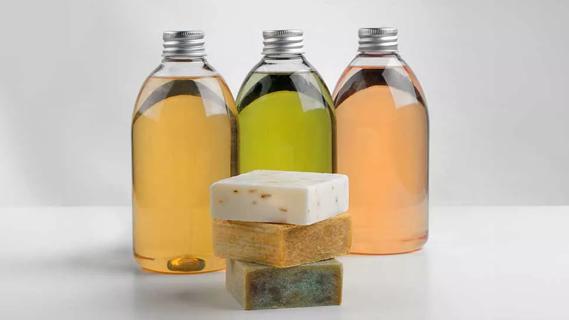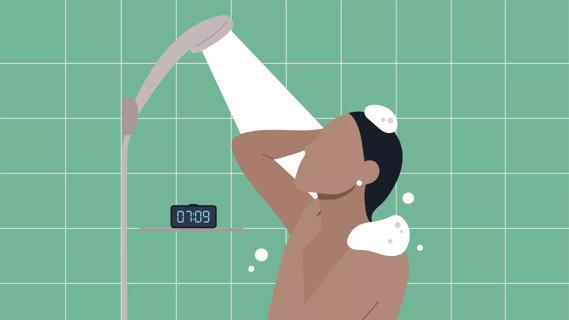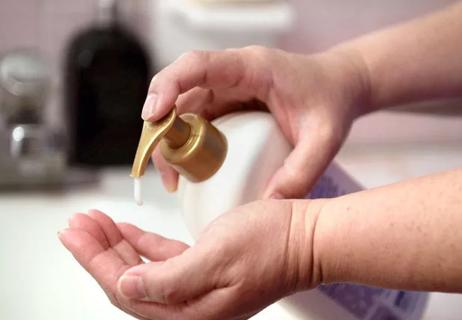Though this is a myth, the ‘stubble stage’ struggle is real, but moisturizing can help

If you’ve ever wanted to get rid of errant hairs in a hurry — whether they’re on your face, arms or elsewhere on your body — you’ve probably hesitated before picking up a razor. Surely you should wax or use a depilatory cream instead, right?
Advertisement
Cleveland Clinic is a non-profit academic medical center. Advertising on our site helps support our mission. We do not endorse non-Cleveland Clinic products or services. Policy
After all, you’ve always been told that shaving your hair will make it grow back thicker … in exactly the spots where you don’t want luscious locks to grow.
As it turns out, this is a myth: Shaving won’t make your hair regrow any thicker or faster. But there’s some logic behind thinking it does.
“When hairs are cut short, they can feel stubbly or stiff because their shorter lengths have increased resistance to bending forces,” explains dermatology resident Taylor Bullock, MD. “They can also feel sharp and prickly due to uneven and sharp edges from being recently cut.”
Dr. Bullock delves deeper into what’s really happening when you shear off unwanted stragglers and what you can try instead if you don’t want to deal with stubbly regrowth.
Let’s start with an imperfect but helpful analogy: Think about a dandelion growing in your yard.
If you cut the dandelion with scissors or run over it with your lawnmower, it will seem to be gone — for now. Beneath the surface, though, its roots are intact, and a new stem will soon grow. When it makes its way above ground, the dandelion will be visible again.
Shaving is sort of like that.
Each hair on your body grows from its own hair follicle, a tube-like structure surrounding the root and strand. In this analogy, each hair is a dandelion whose “stem” you see growing from your skin. This is your hair shaft, and it’s made up of dead skin cells.
Advertisement
When your shave, you cut your hair at the shaft — but that doesn’t impact the actual root of the hair, which, like a dandelion root, is located beneath the surface.
“After shaving, you may notice that your hair seems to grow back thicker and darker,” Dr. Bullock says, “but this is actually due to the variation of the hair shaft along its length, not because shaving has actually altered the hair follicles.”
In other words, when shaved hairs first start to grow back in, they may seem thicker or darker than before — but they’re really not.
“Instead of seeing the thinner and often lighter ends of longer hairs, you see the darker and thicker bases of the hair shafts,” Dr. Bullock explains. “Once the hairs grow longer, though, they’ll return to their softer, original texture.”
Shaving doesn’t impact how quickly your hair regrows. But then, how long will regrowth take? On average, the hair on your scalp and lower legs grow about half an inch to one inch per month. But your regrowth speed depends on, well, you.
“The length of time it takes for your hair to pass through the ‘stubble stage’ will depend on how fast your hair grows and the location of the hair you’ve shaved,” Dr. Bullock states. “The stubble stage will be much shorter in locations where hair grows quickly, such as the scalp, in comparison to the eyebrows or the thighs.”
That means your freshly shaved head will grow back in fairly quickly (which is annoying for haircut purposes, we know!), while hair elsewhere on your body may not be so quick to return.
And if you’ve heard rumors of a prescription wonder cream that can slow down hair regrowth, well, that’s sort of true — but Dr. Bullock says they’re not really worthwhile.
“A topical medication called eflornithine can be used in combination with waxing or depilatories to slow down hair growth,” he notes, “but I don’t typically recommend it because it doesn’t work very well and is very expensive.”
There are lots of things you can do to get a closer, smoother shave, including:
But when it comes to combatting stubble, Dr. Bullock says one tip rises to the top. “The best thing you can do to lessen that initial coarseness is to moisturize your skin. The drier your hair is, the pricklier it will feel.”
He adds that the best time to apply moisturizer is right after you shower, when your skin is most able to absorb moisturizer.
There are lots of benefits to shaving: It’s quick, easy and inexpensive, and you can do it from home. But because you’re cutting off your hair at the shaft rather than removing the root, shaved hair will grow back faster than hair that’s removed by, say, waxing or sugaring.
Advertisement
And there’s a longer-term option to consider, especially if you have a lot of unwanted hair that tends to grow back very quickly.
“Laser hair removal can be expensive, but when you add up the time and money spent on other hair removal techniques, it’s often the best option by far,” Dr. Bullock says. “Laser hair removal requires five to eight treatments, with a few maintenance treatments afterward.”
Whatever you choose, just know that, for better or worse, nothing you do will cause your hair to grow back thicker, darker or even faster.
Advertisement
Learn more about our editorial process.
Advertisement

You’re sharing your sheets with dust mites, bacteria and lots of dead skin, so you’ll want to keep your bedding fresh

You may notice itching, redness and swelling after wearing or using laundered items

We don’t fully understand how cleanliness impacts immune system development, but we do know that preventing illness is important

How often you lather up your locks can depend on various factors, like hair type, age and ethnicity

An icy blast may boost mental clarity, increase circulation and give your skin a little glow — but don’t overdo it

This olive oil-based soap is generally mild and safe when diluted

It’s a wash — when you bathe is a personal preference

Try turning the heat down on the water and opting for a moisturizing soap

Start having sex about 72 hours before ovulation, then at least every other day during your fertile window

Attachment theory suggests that your earliest relationships shape connections throughout your life

It isn’t a recognized mental health disorder, but research shows that problematic social media use can negatively affect your mental health, self-esteem and sleep